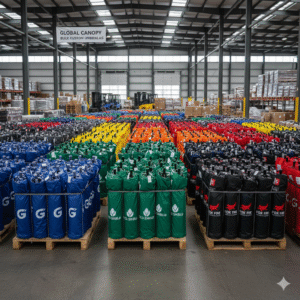Talent Tech Labs (TTL) has published its Extended Workforce Technology Ecosystem, a landmark research framework that maps out the technologies powering non-permanent and contingent labor from freelancers and gig workers to contractors and consultants.
Talent Tech Labs (TTL) has introduced a groundbreaking research framework that reshapes how organizations understand, evaluate, and strategically leverage technologies designed for the extended workforce. With businesses increasingly relying on freelancers, contractors, gig workers, consultants, and other non-permanent talent, TTL’s Extended Workforce Technology Ecosystem emerges as the first comprehensive, structured market map capturing the tools and platforms powering this fast-expanding segment of the labor economy.
The unveiling of this ecosystem marks a significant milestone in the evolution of workforce innovation. For years, HR and procurement leaders have struggled to navigate the fragmented landscape of extended workforce tools—platforms and technologies that often operate in silos, lack categorization, and evolve too quickly for traditional research models to keep pace. TTL addresses this challenge head-on with a systematized taxonomy that brings clarity to a historically opaque domain.
Why This New Ecosystem Matters in a Shifting Workforce Landscape
The modern workforce has changed dramatically. Companies across industries now depend on a diverse mix of full-time employees and external workers to drive productivity and adapt to fluctuating market needs. Non-permanent labor—once considered supplemental—has become core to organizational strategy. As a result, understanding the technology that supports, manages, and optimizes the extended workforce is no longer a niche requirement; it is a strategic imperative.
TTL’s Extended Workforce Technology Ecosystem directly responds to this need by providing two major resources:
-
A Visual Infographic:
A fully mapped, category-based illustration that organizes every solution supporting contingent and external labor across talent lifecycle stages. -
An Explainer Report:
A deep-dive analysis unpacking the trends, innovations, vendor categories, and technological movements shaping extended workforce management.
Both assets work together to offer businesses a bird’s-eye view of an intricate market sector that has grown in complexity due to rising talent shortages, new work models, and the rapid adoption of AI.
A Detailed Taxonomy Covering 16 Verticals, 32 Sub-Verticals, and 346 Technology Vendors
At the core of TTL’s ecosystem is a richly developed taxonomy that demonstrates just how sophisticated the extended workforce technology landscape has become. The Extended Workforce Technology Ecosystem 1.0 catalogs:
-
16 primary verticals
-
32 sub-verticals
-
346 distinct vendors
This depth makes it one of the most comprehensive market maps ever created for non-permanent workforce technology.
Among the most critical categories featured are:
-
Vendor Management Systems (VMS) – Platforms that manage contingent workforce programs, staffing suppliers, compliance, timekeeping, and payment workflows.
-
Freelance Management Systems (FMS) – Tools enabling companies to directly source, engage, and manage independent talent.
-
Direct Sourcing Technologies – Solutions allowing employers to build private talent pools and attract contingent workers without intermediaries.
-
Staffing Marketplaces – Online platforms that match talent with project-based or on-demand roles.
-
AI Recruiters & Automated Screening Engines – Intelligent tools that reduce administrative burden and improve the precision of candidate selection.
-
Contractor Payroll Providers (AOR/EOR) – Compliance and payment systems ensuring legal, accurate, and risk-free management of independent workers.
By categorizing these technologies, TTL highlights not only their individual roles but also the interconnected nature of the modern talent ecosystem. It emphasizes that extended workforce management is no longer just about sourcing contractors—it spans sourcing, vetting, compliance, governance, performance tracking, and strategic workforce planning.
The Key Trends Powering Innovation in the Extended Workforce Ecosystem
TTL’s report identifies a collection of high-impact trends shaping the ongoing evolution of extended workforce technology. These trends illustrate why organizations require clearer frameworks to evaluate tools and make strategic decisions.
1. The Acceleration of AI-Powered Systems
Artificial intelligence has become one of the most transformative forces across the entire talent landscape. From AI recruiters capable of analyzing thousands of freelance profiles within minutes to automated decision engines optimizing match quality, AI’s influence is unmistakable. Platforms are increasingly using AI to:
-
Score worker skills
-
Predict project fit
-
Automate outreach
-
Reduce bias
-
Streamline selection workflows
This shift dramatically increases the efficiency of extended workforce operations.
2. A Strong Emphasis on Compliance and Governance
As more companies rely on contractors and freelancers, legal and regulatory obligations have become more complex. The rapid growth of Employer of Record (EOR) and Agent of Record (AOR) services reflects the need to protect organizations from misclassification, tax issues, and labor law violations.
New governance technologies are emerging to:
-
Validate independent contractor status
-
Track worker risk profiles
-
Provide real-time compliance insights
-
Harmonize global hiring rules
This ensures that expanding contingent workforces do not expose organizations to unnecessary risk.
3. A Shift Toward Total Talent Planning
Companies are increasingly reframing workforce strategy through a holistic lens, integrating both permanent and non-permanent labor into unified planning models. Total talent management requires tools that visually connect all categories of workers and give leaders a complete view of the workforce. TTL’s new ecosystem supports this transition by offering a clear structural understanding of how extended workforce technology fits into broader talent operations.
4. Talent Lifecycle Orientation
TTL built its ecosystem around four distinct stages of the talent journey:
-
Source
-
Engage
-
Select
-
Hire
This structure reflects how organizations typically interact with external workers and how technology supports each step. It also reinforces the need for alignment between tools that may traditionally be viewed independently.
Expert Perspectives from Talent Tech Labs
TTL’s leadership underscores the strategic importance of this new ecosystem in helping companies prepare for the future of work.
Brian Delle Donne, Co-Founder and Partner of TTL, highlights the growing significance of understanding the extended workforce:
“As companies look for holistic ways to manage an extended, universal workforce, understanding how work will be performed in the future is critical.”
His statement reflects the shift toward workforce models where permanent and contingent labor exist in balance—and where technology plays a central role in orchestrating the two.
David Francis, Research Practice Leader at TTL, elaborates on the motivations behind the new framework:
“Technology is evolving at an incredible pace, especially in AI. At the same time, worker expectations are changing. Organizations need a clear, structured way to navigate this environment.”
Their insights reinforce TTL’s belief that employers must adopt a more strategic approach to external workforce management.
What This Means for Talent, HR, and Procurement Leaders
TTL’s Extended Workforce Technology Ecosystem is more than a directory—it is a strategic planning tool. For leaders managing external workforce programs, the ecosystem delivers several key benefits.
1. Greater Strategic Clarity
The ecosystem gives decision-makers a structured view of the external workforce technology environment, enabling more informed planning across procurement, HR, and talent acquisition.
2. Improved Technology Selection and Investment
With 346 categorized vendors, organizations can compare solutions based on:
-
Functionality
-
Category focus
-
Integration capabilities
-
Alignment with company needs
This clarity reduces the risk of investing in redundant or mismatched tools.
3. Support for Total Talent and Unified Workforce Models
As more companies move toward blending permanent and contingent labor strategies, TTL’s framework helps leaders implement cohesive, cross-functional workforce planning approaches.
4. A Benchmark for Current and Future Tech Roadmaps
The ecosystem serves as a reference point, enabling organizations to evaluate whether their current extended workforce solutions align with market standards and future trends.
A Broader Perspective: Extending TTL’s Established Talent Frameworks
The Extended Workforce Technology Ecosystem 1.0 integrates seamlessly into TTL’s larger family of research frameworks, including:
-
Talent Acquisition Ecosystem 13
-
Talent Management Ecosystem 3.0
This holistic approach allows organizations to explore connections between permanent and non-permanent labor technologies. Together, the frameworks create a full picture of how technology influences the entire workforce experience—before hiring, after hiring, and beyond traditional boundaries.
TTL emphasizes that the new ecosystem is not merely a visual map, but a strategic resource designed to help organizations reimagine how they approach talent, procurement, and workforce planning.
Conclusion: A New Era of Clarity for Extended Workforce Technology
Talent Tech Labs’ Extended Workforce Technology Ecosystem represents a major turning point in how organizations understand and manage non-permanent labor. By mapping 346 vendors across 16 verticals and 32 sub-verticals, TTL provides the first truly structured lens into a historically fragmented marketplace.
As AI accelerates innovation, regulatory frameworks tighten, and businesses continue shifting toward flexible workforce models, this ecosystem will become an essential guide for leaders seeking clarity, strategic alignment, and competitive advantage. TTL’s work signals a future where organizations operate under a “universal workforce” mindset—one that integrates permanent and extended labor strategies into a unified, technology-driven vision for the future of work.
Stay updated with HR Tech News for the latest innovations in Human Resources technology and expert insights from industry leaders!
Read related news – https://hrtech-news.com/ramco-systems-named-leader-in-apac-mcp-solutions-for-2025/





